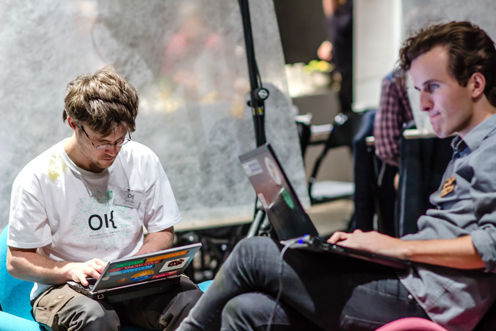MADE BY: Datavaalit Community
MADE BY is the Institute’s interview series that allows artists, designers, thinkers and doers to unfold their creative process in their own words. This time we interviewed Leo Lahti, one of the members of the community that founded the Finnish Datavaalit (Data Election) project. Lahti together with Juha Yrjölä, Antti Poikola, Juuso Parkkinen, Joona Lehtomäki and Teemo Tebest started the Datavaalit project aiming to make information about elections, candidates and social issues easily accessible to people. The project connecting the open democracy community won the Apps4Finland contest’s Data Category in December 2012.
The idea for the project came up for the first time in spring 2012 in Antti Poikola’s blog. The blog writing lead to a meeting, then a setting up a Facebook group - followed by further meetings around the topic. Just before the Finnish elections we were given start-up funding by Sitra. We used that to create a web infrastructure and communications to raise awareness about the project. This was when the project really began to grow.
The implementation of the project began from a realisation. In principle, publicly funded organisations’ original data is open to everybody, but it can be messy and difficult to read. Whilst writing our blog posts we needed to clean up a lot of data before being able to use it. That’s when we realised we should publish the cleaned data for others to use too. It was a simple idea no one had thought of before.
The Starting point for this project were the elections. The website of the Finnish Ministry of Justice gave us the basic information about the candidates and their funding. Statistics Finland’s data allowed us to collect information about the parties’ success in previous elections. The central government has data readily available, but we would like to get more data about the Finnish municipalities. Currently, we’ve had varied replies to our requests for information from the municipalities.
Received data is cleaned with a transparent code and then published. Algorithms that are used in cleaning data are also always published so that it can be verified the information itself has not been modified.
A central theme of the project has been crowdsourcing the database maintenance process. Also, crowdsourcing the information requests is one of our future projects. However, these are still work-in-progress.
At the moment the datavaalit.fi website operates on a server maintained by Kansan muisti ry. Anyone can freely access the information from the site set up during the OKFestival in Helsinki 2012. It is possible to search for information about the candidates and read their social media updates. So far we’ve had about half a million write-ups from the candidates on the site.
The challenge of this project is the fact that everything is on a voluntary basis. All the funding has been used for the infrastructure, so it’s not been possible to pay for anyone to work on the project for any great length of time.
Between elections we are developing the database and algorithms. It is the kind of quiet work that can’t be seen until the elections when it makes the process with data run more efficiently. Between elections we also brainstorm about what new things could be developed. For example, based on the feedback from our Facebook group we are now cleaning up and publishing information on candidates’ election funding.
Internationally there has been a need for this kind of project and there are other projects already being started. The Data Election Project logo we are using, for example, is from the equivalent project in the UK. There are also similar projects in Austria, Russia and the United States. We have tried to establish contacts internationally with the European Parliament elections in mind, so we extend the project to cover Europe.
This project shows that people have a real interest in election data. Hopefully, this will also encourage the government to continue their good work in order to improve the availability of data even further.

Image: Daniel Schildt
